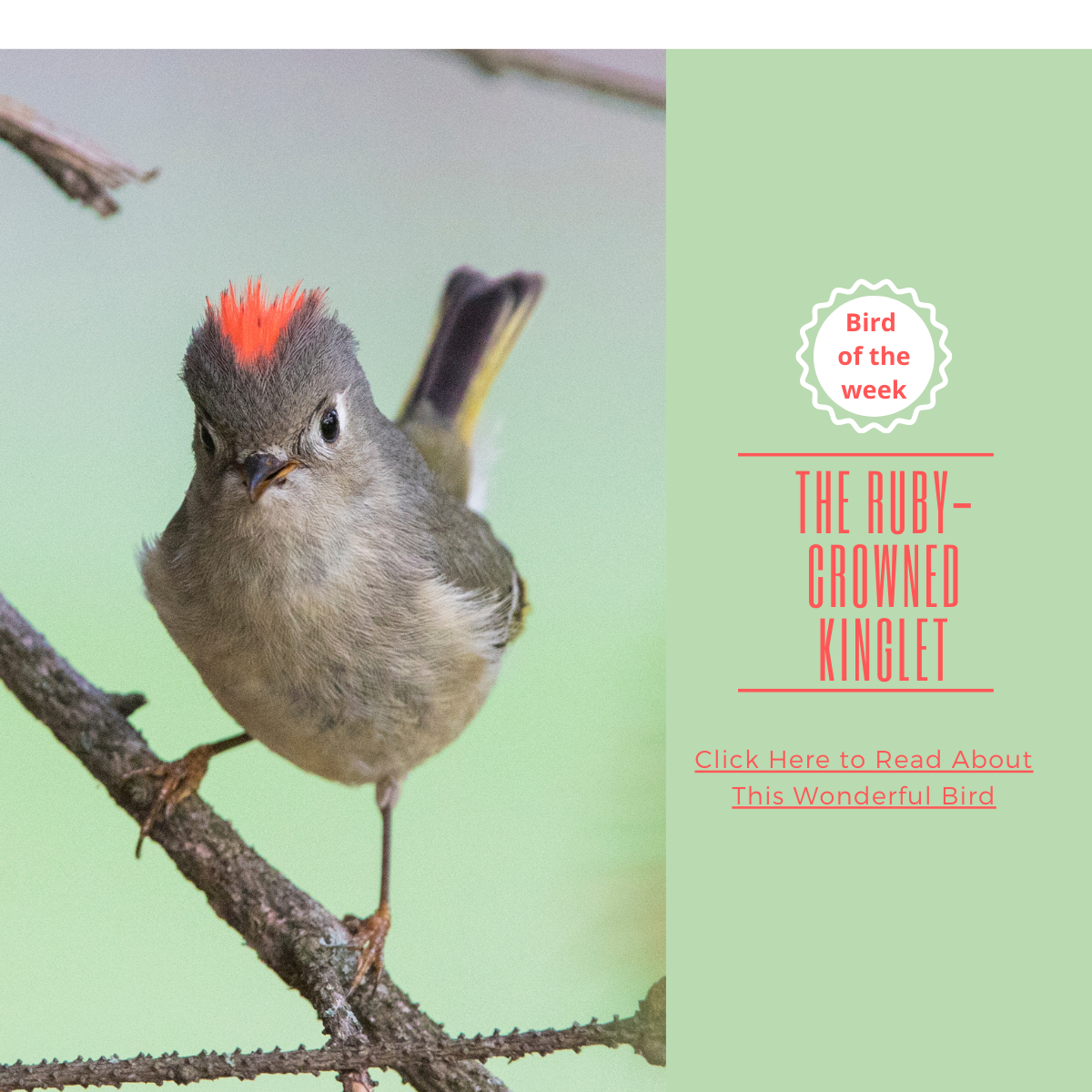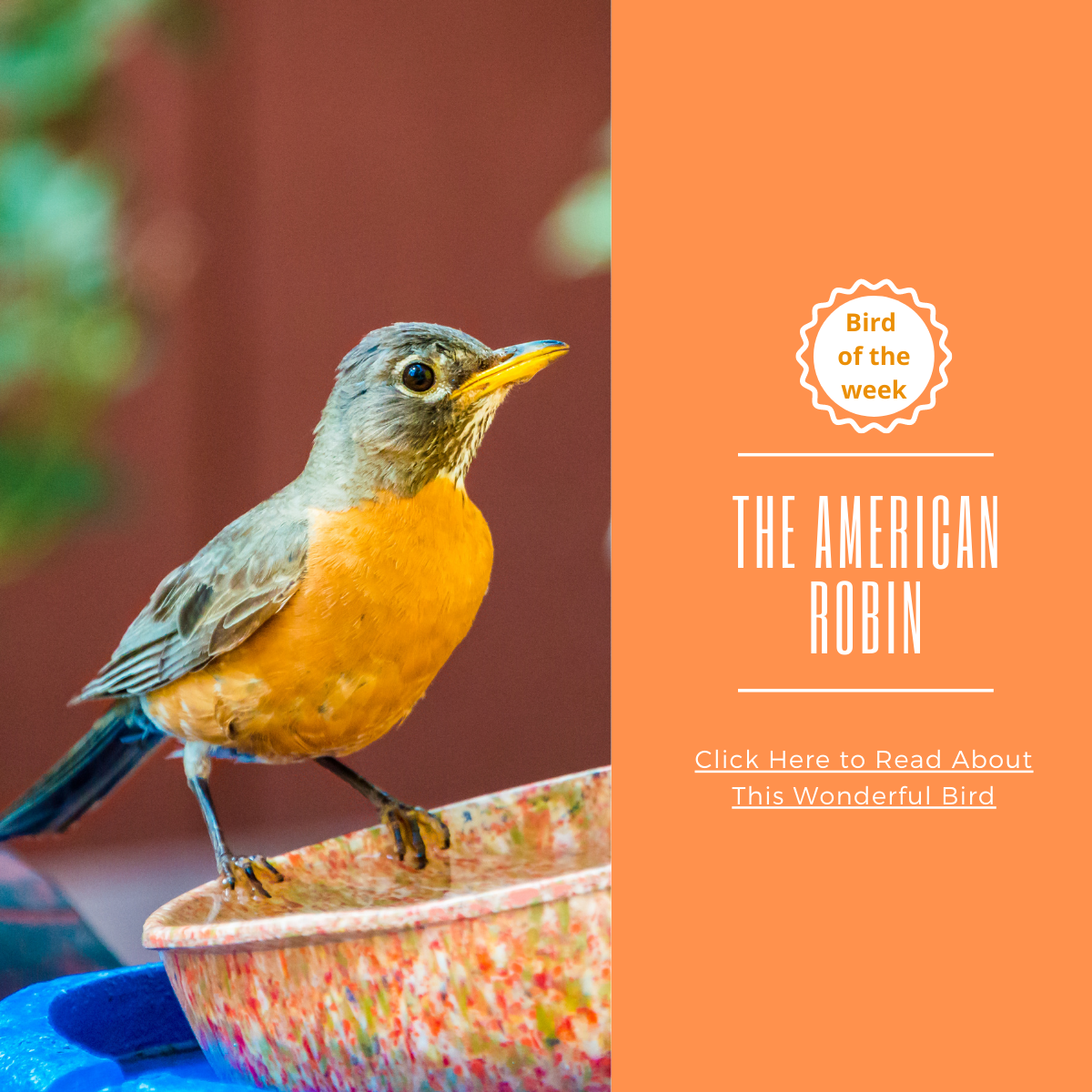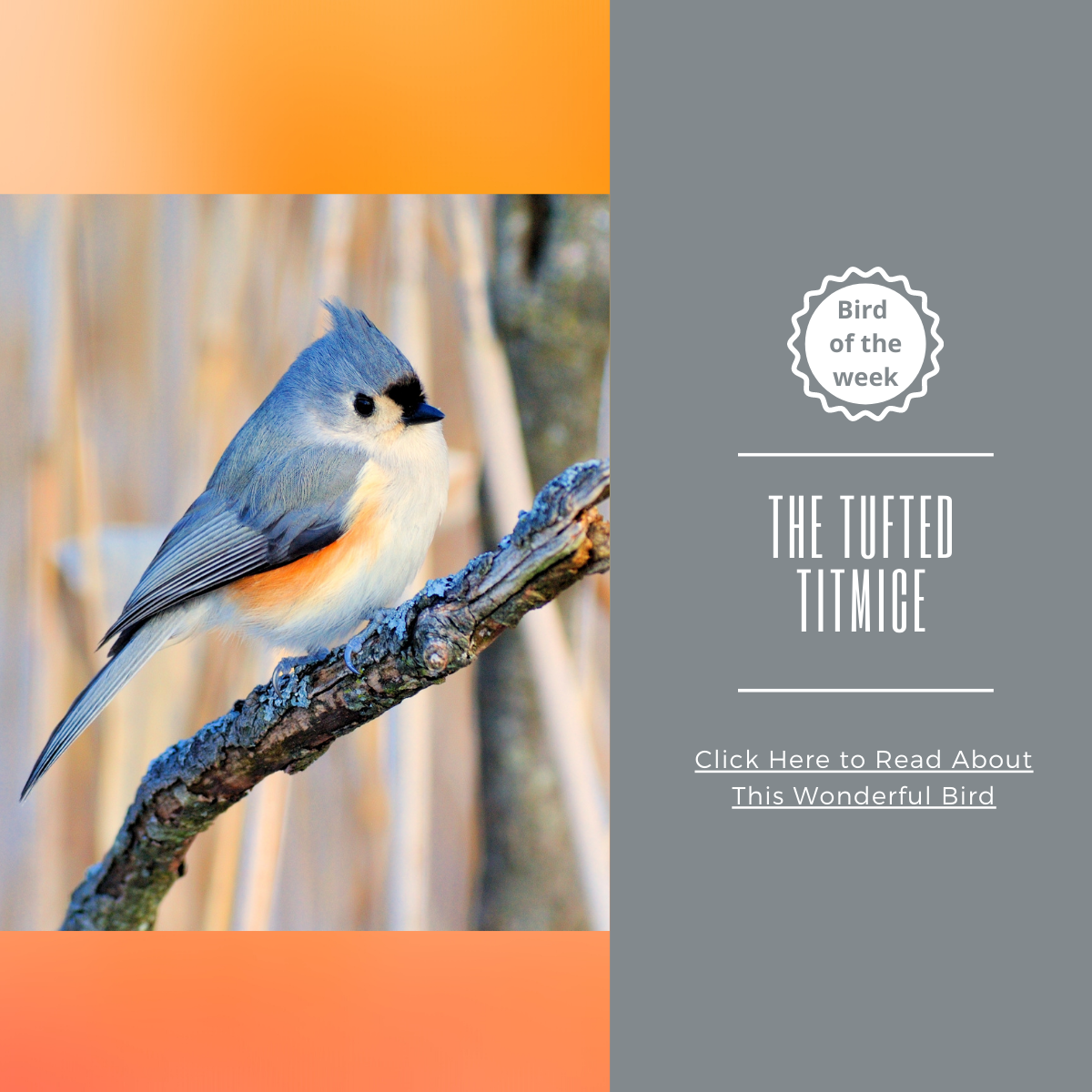
A couple of days ago, I was sent a home-made video from one of our clients at Nature Anywhere, Kathleen F. I almost fell off my chair! This was a rare pleasure because the bird my client spotted was a Ruby-crowned Kinglet, one of the smallest passerines in North America and one that seldom makes an appearance! They spend most of their time hidden away in tall conifers. What was even rarer is that this little buddy was showing his red-crown! Well done, Kathleen!
Ruby-crowned Kinglets are extremely energetic and very tiny, only about 3.5-4.5 inches small! They are an olive-green, pocket-sized songbird with white wing bars. Their legs are black with yellow feet. A little secret how to identify these little tea-cup passerines: the white wing bar has a black bar directly underneath.
Males and females are identical, except for one glaring difference: the red crown on the adult male’s head, which is concealed most of the time. Juveniles look like adult males.
Adults show their fiery-red crowns when courting a mate, challenging a competitor or confronting a predator. When the crown is not visible, you might still be able to identify them by the pronounced white ring around the eyes.
Ruby-crowned Kinglets are migratory birds. They range from north-west Canada and Alaska all the way south to Mexico. Ole!
During the winter, Ruby-crowned Kinglets migrate to the high treetops of open deciduous forests in the southern/southwestern regions of the United States, as well as Mexico. Breeding season takes place in the tall and crowded evergreen forests in the northern portion of the United States.
Ruby-crowned Kinglets can survive up to 5 years in the wild! Not bad for a tea-cup sized passerine!
In case you missed last week's bird-of-the-week: The American robin.
What kind of bird feeders do Ruby-crowned Kinglets prefer?
Ruby-crowned Kinglets can be loners sometimes - but also mix in with chickadee or warbler flocks. As you can see, they like to hang out with birds of their own size.
Though nesting high, they feed low, as they forage around shrubberies. Which is why suet feeders (during the winter) or window/peanut-butter feeders might do the trick.
You can catch a good glimpse of them as Kathleen did with our window feeder: looking nervous, flicking their wings, jumping up and down but not too scared of us. Such a pleasure to see these cutie pies enjoying our hospitality!
Check out the video Kathleen sent us:
What do Ruby-crowned Kinglets like to eat?
Flicking their wings as they peck and forage from branch to branch, Ruby-crowned Kinglets eat various insects such as spiders, wasps, ants, bark beetles and eggs, especially if laid under leaves or twigs. In winter they also eat seeds, sap and berries.
What do Ruby-crowned Kinglets sound like?
For a tiny little bird, the Ruby-crowned Kinglet is rather boisterous and loud! You will hear the ‘jid jidt’ throughout the woods but if you analyse the chirp - it gets interesting: These little flyers produce complex songs which can be broken into three: first a high-pitched tune, followed by a few low notes and for the grand finale: a three-note phrase. The Kinglet also produces an alarm call when predators are nearby.
What I love about this video, aside from the beautiful sounds we learn, is that in the first segment you see the red crown appear.... and then disappear.
Love in a time of Kinglets
Ruby-crowned Kinglets are monogamous - per season. The partnership changes every spring, but while nesting and raising broods, the couples stick together, making one brood per season.
The romance begins when the male approaches the female. No feminism here! The male hops from one branch to another making circles around the female, raising his tail and making his ruby crown visible. He sings and the female flutters her wings. This little dance goes on until they make themselves scarce behind the shrubbery to mate.
Ruby-crowned Kinglets breed in the dense evergreen forests spread throughout the Northern parts of the United States.
The female builds the nest, usually cup-shaped, using moss, grass, lichen, bark strips, twigs, rootlets, needles and spider webs for the outer wall, with the inside layered with feathers, plant down and hair.
The nests are well hidden as they build way up high in coniferous trees, (about 40 feet up,) suspended from two hanging twigs!
Evolution makes some pretty interesting moves. But their technique does the trick as the nest stays protected from any predator or birder.
Ruby-crowned Kinglets can lay up to 12 eggs per nest - the largest clutch relative to such a small size of any North American passerine.
The female will stay in the nest throughout incubation which usually lasts for two weeks, during which time the male brings food to the female.
After hatching, the female stays with the young for a few days then joins the male in bringing food to the little ones.
The young fly out of the nest about 16 days after hatching. The male stays in the area to feed the young’uns for another 10 days or so - as the female leaves the breeding territory.
FUN FACTS!
~Fly much, burn little
Even though this species tirelessly flies from branch to branch, scientists have found that they only burn approximately 10 calories per day!
~Tactics
The reason for the quick flickering of the Ruby-crowned Kinglet is to scare the bugs! Once the bug moves from the fright - the Kinglet attacks!
~Doppleganger
Because of their coloring ,Ruby-crowned kinglets are most often confused with Hutton's Vireo! The way they flick their wings is very similar, however ruby-crowned kinglets have yellow feet, as opposed to the black ones of the Hutton’s vireo. Also, Ruby-crowned Kinglets are much more active.





Leave a comment
All comments are moderated before being published.
This site is protected by hCaptcha and the hCaptcha Privacy Policy and Terms of Service apply.